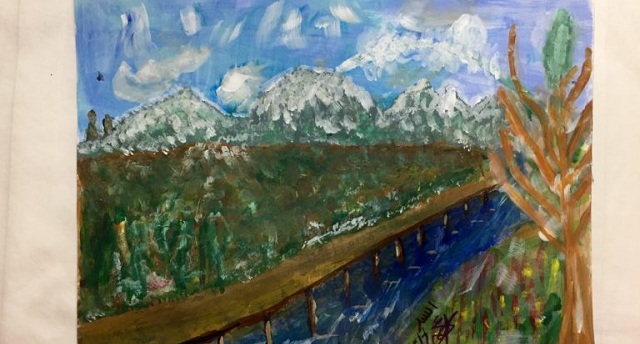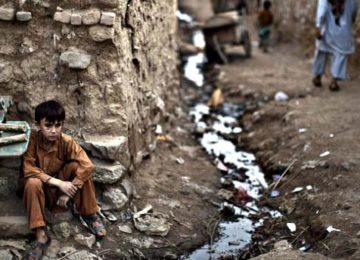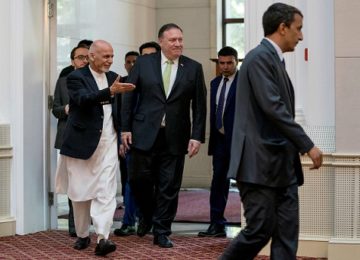As an art exhibition featuring the works of eight current and former Guantanamo detainees, Yemeni, Algerian, Pakistani and Kuwaiti, is now showing in New York, we thought we would look at the paintings and sculptures of an Afghan who is still in the prison camp, who is not featured in the exhibition. Assad (known in Guantanamo as Harun Gul) was captured in Afghanistan in 2007 and accused of being a Hezb-e Islami commander and courier for al-Qaeda. An earlier investigation into his case by AAN found the United States had presented no credible evidence to back up its claims. AAN’s Kate Clark has been looking at Assad’s artwork and speaking to his lawyer about the role of art for the detainees.
In 2016, AAN published an exhaustive investigation into the Afghan experience in Guantanamo “Kafka in Cuba” . The section on Assad’s case is re-published here as an appendix.
“He produces more art work than any of our clients,” Assad’s (1) lawyer, Shelby Sullivan-Bennis, told AAN. “I’m always impressed. A lot of the pieces come with some sort of meaning. He traces his daughter’s face, for example, again and again.” (2) Assad’s one and only child, a girl, was just an infant when he was detained ten years ago.
Assad is someone I know only indirectly, through documents produced at Guantanamo and by the American justice system. I spent much of 2016 pouring over these papers and those of the other seven Afghans still left in Guantanamo at the start of that year. Just two of the eight are still incarcerated in Cuba, Assad and Muhammad Rahim. They are among the 41 detainees left in the prison camp, remnants of the 730 men ever held there, 220 of whom were Afghan. Assad is one of the 26 men classed as ‘ordinary detainees’ and Rahim one of the 15 ‘High Value’ detainees.
Assad was captured in Afghanistan in 2007 probably by the Afghan intelligence agency, the NDS, (3) and handed over to the US who accused him of being a Hezb-e Islami commander and al-Qaeda courier. Like almost all the other eight Afghans still in Guantanamo in 2016, he has described being tortured (there is confirmatory evidence in two of the cases, although not Assad’s). Like all the others, the US has yet to put forward compelling evidence to support any of its claims against him.
AAN’s investigation into these eight cases found the US based its accusations on hearsay, ‘confessions’ and accusations secured through torture. We found files rife with gross mistakes and misunderstandings and some accusations which were simply fantastical. As can be seen in the appendix to this dispatch, all the allegations against Assad were sourced to his own testimony or that of other detainees which, given the use of torture, makes them unsafe. Even if the US allegations against him are true, the documents available indicate he was only a very junior Hezb commander; at his level, Afghan couriers working with al-Qaeda have been many. The rationale for holding him in Guantanamo has never been apparent.
Out of all of the eight Afghan detainees, the publicly available documents about Assad give the least information about him. Unlike some of his compatriots, Assad’s ‘voice’ is barely heard through the written word. Looking through his paintings, however, a little more of the man comes through.
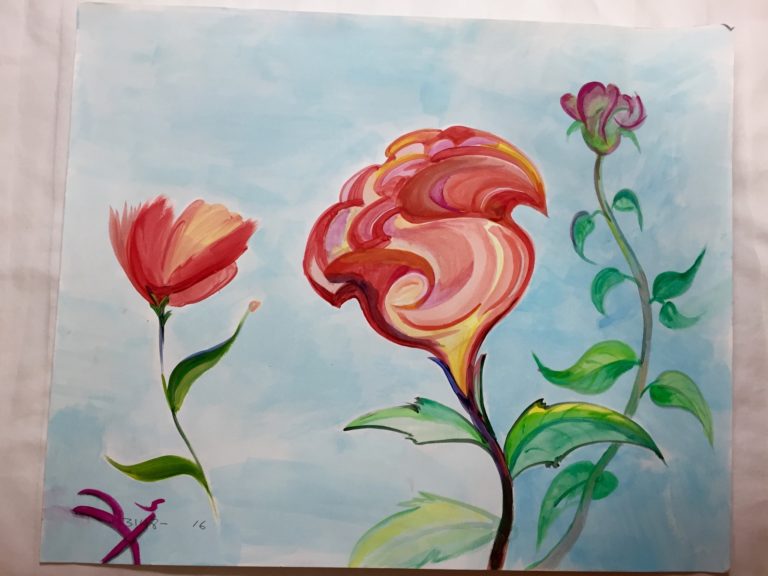
Assad’s artwork
Assad paints seascapes and mountainscapes, rivers and flowers and, on what look like paperweights fashioned out of clay, geometric shapes and, again, flowers. Apart from his daughter, there are few figures. The recurring images of the sea are curious for a man born in a landlocked country (he is from Nangrahar province), but the ocean appears in many detainees’ paintings. One of his former fellow inmates in Guantanamo, Mansoor al-Dayfi, a Yemeni who was released to Serbia last year and is one of the artists with work in the current exhibition, “Ode to the Sea: Art from Guantánamo”, in New York, (4) gives some more context. He has described how the sea was a constant presence at the camp, but only its sound. Barriers blocked the prisoners’ view of the ocean. For the Afghans who arrived at the prison camp who had never seen the sea, it was simply unimaginable, said al-Dayfi in an essay for the exhibition’s catalogue:
All that the Afghans knew was that it was a lot of water that kills and eats people. They started asking about the sea. People who knew what the sea was, mostly people like me, from Arab countries, tried to explain it to the Afghans, but that made them even more afraid.
An Afghan pointed to a cargo plane, and said, “The sea is big like this?”
Bigger, he was told. “Ships can carry many planes that size,” another detainee said.
The Afghans told other detainees that the American interrogators threatened them, saying, “When we finish with you here, you will be taken to the sea, and you all will be thrown there.” It wasn’t a good beginning with the sea. (5)
Assad’s lawyer, Shelby Sullivan-Bennis, who works for the legal rights organisation, Reprieve, said she has not asked him why he paints the sea so often or how he came to know about it. However, al-Dayfi said that, for four days in 2014, a hurricane enabled some of the detainees to finally see the ocean. Guards pulled down the green tarpaulins that blocked their view, ahead of the storm.
We all faced one direction: toward the sea. It felt like a little freedom, to look at it. I heard an Afghan guy shout, “Allahu akbar!” at the sight, thanking God for the wonder of the sea, repeating that many times, calling out to his friends.
The tarps remained down for a few days, and the detainees started making art about the sea. Some wrote poems about it. And everyone who could draw drew the sea. I could see different meanings in each drawing, color and shape. I could see the detainees put their dreams, feelings, hopes and lives in them. I could see some of these drawings were mixtures of hope and pain. That the sea means freedom no one can control or own, freedom for everyone
Each of us found a way to escape to the sea.
Those who could see the sea spent most of their time watching, listening and looking at that big blue color, which cools our souls. The sea was a little rough, because of the windy weather. Huge waves that rose high and hit the land. Looking at a sea like that was scary, but it was what we got, and it felt good. Afghans started calling out to one another and expressing their feelings about what they saw, and turned to us with many questions about that beast.
Those days without the tarps were like a vacation. On the last day the sea looked refreshed, calm and lovely. A huge ship sailed close by. Detainees called out to one another to look at the ship. We kept looking at it like something magic would happen and all of us would be freed. But the ship just disappeared. The next day the workers returned and blocked our sight.
Sullivan-Bennis said her clients vary in their attitude to their artwork. In Assad’s case, he does not take his art too seriously.
He openly mocks his ability to paint and depict anything recognizable, but he continues to incorporate his daughter’s name into almost every piece. He has drawn more copies than I can count of a photo that he has of his daughter; in its final iterations, his sketch is the spitting image of the photo. He also uses art as a way to gift me something, as he often says that he feels he has nothing with which he can thank me… He uses art to show love.
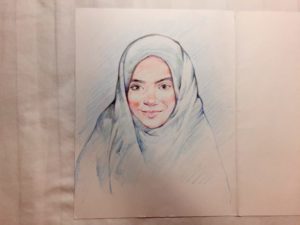
Art classes in Guantanamo
There has always been some art produced by inmates in Guantanamo, even if it was just etching flowers on styrofoam cups. One of the other lawyers with clients there, Aliya Hana Hussain, from the Centre for Constitutional Rights said they heard about this from the very early Bush years, and that “the guards confiscated those [cups] and took them to be analyzed by intelligence to see if they had coded messages.” Sullivan-Bennis, who represents eight inmates at Guantanamo apart from Assad, also said they were told by the “secure facility people that the prisoners might put squiggles into their art as messages to al-Qaeda.” The lawyers assume that this early work was destroyed.
It was much later, after President Barack Obama came to power in 2009, that inmates began to have access to art classes. These, in the words of the US military, were aimed at “providing intellectual stimulation for the detainees and allow[ing] them to express their creativity.”
Even later, Sullivan-Bennis said artwork began to be actively encouraged by detainees’ ‘Personal Representatives’, the military officers who represent them at the Periodic Review Board. This body, set up by Obama, assesses each detainee to determine if they pose a threat to the US. It can chose to send a detainee to military trial, to keep them detained without trial or recommend their transfer out of the camp (meaning release to a third country, with conditions ensuring they will not be tortured or disappear). The Board first met on 11 November 2013. The Personal Representatives, said Sullivan-Bennis, wanted to demonstrate that ‘their’ detainees were participating in courses offered and “had developed skills.” It was a way of trying to convince the Board that they were suitable for transfer out of the camp. She was able to take some artwork – after it was censored – off the island from 2015. As with all things in Guantanamo, said Sullivan-Bennis, “the rules around art-making change frequently and seemingly arbitrarily: the number of canvases that they’re allowed to work on at any given time, the number of pieces they’ve made that they’re allowed to keep in their cell.”
There are other classes apart from art offered and these have varied over time, both as to subject and who is eligible to attend. Currently, one instructor, not an art teacher, is teaching everything in a class called ‘life skills’. These include computer skills and something Sullivan-Bennis found very distressing – teaching ‘forever prisoners’, ie those slated for continuing detention without trial, to write resumes. One man, Sullivan-Bennis said, who had been detained soon after 2001 when he was very young, had only had a single job before being incarcerated. On his resume, she found he had listed the ‘jobs’ he had done in detention.
Unlike many of her clients, Sullivan-Bennis said Assad does not depict suffering. Others paint pictures showing torture, or other forms of misery – one client, for example, painted an older man with a very long beard in a very dark room without dimensions, looking high up to a slit in the wall from which light was coming. The lawyers can see such paintings, but they are not allowed to take them away from Guantanamo. What we can see of the Guantanamo artwork, then, is a skewed, censored selection, tending to show the positive.
Taking artwork off-site may also be forbidden for reasons that are inexplicable. Assad, for example, wanted to send a gift to Sullivan-Bennis’ mother (who is an artist). Told that she lives next to the sea and any depiction of the sea would please her, he managed to find some sea shells, said Sullivan-Bennis and attach them to a fairly large piece of wood, about 8 by 11 inches (20 by 13 centimetres). He shaved the wood, indented it and painted her mother’s name on it. “They didn’t let it out. We don’t know why. It was an enormous personal frustration of mine.”
One other thing to note: art classes are only offered to ordinary inmates at Guantanamo, not the ‘high-value detainees’. The latter category includes the only other Afghan in Guantanamo still, Muhammad Rahim. His outlook is even worse than Assad’s. He was the last person who was subjected to the CIA’s torture and rendition programme and also the last Afghan to have been brought to Cuba. He is the only Afghan who is classed as a ‘High Value Detainee’. That means his case is ultra-secret, with the substance and much of the detail of the allegations against him classified. His lawyer, Carlos Warner, has said he is not even allowed to say why he believes his client is innocent – although the government is free to say what it likes about him. High Value Detainees do not have access to art classes. Some make ‘found art’, said Sullivan-Bennis, using as material whatever they can find – like the styrofoam cups, for example. Where we see glimpses of Rahim is not in artwork, but letters to Warner which have been published: these appear to show him as a witty, wryly political man. (6)
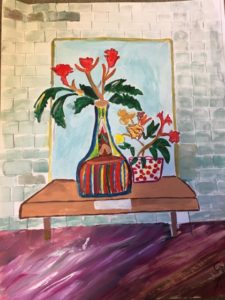
A forever prisoner
Assad should probably have been released by now. He only got a lawyer late in the day, nine years into his detention, which meant he did not have time to prepare a strong case for his Periodic Review Board. He was assessed, for the first time, in the last months of the Obama administration, on 16 June 2016. The Board said he should stay in detention, but also indicated that, if he argued his case better, it might find that he no longer posed a threat to the United States. In the last months, days and hours of the Obama administration, there was a push to release as many detainees who had been recommended for transfer as possible before he left office: the last Afghan to leave Cuba, Wali Muhammed, did so just hours before Donald Trump became president. However, even though Assad now has a lawyer and can make a strong case, said Sullivan-Bennis, it looks extremely unlikely that the Board will recommend him transfer: “The Periodic Review Board, brutally flawed as it is, did operate with a modicum of honesty [under Obama]. It operated at least with a view to clearing some of the men. Now, what’s happening is essentially a farce, carrying on the process without there being a process.”
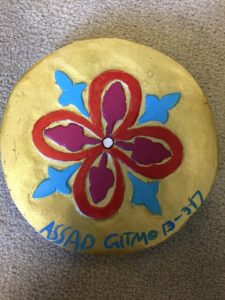
As to other routes out of Guantanamo, as AAN has shown in great detail, the US courts have kow-towed to the executive, presuming that all state evidence is correct. In various detainees’ habeas corpus hearings (when the state has to justify a person’s detention in court or release him or her), judges have accepted evidence that is incoherent, factually mistaken, contradictory and sometimes fantastical (for examples, see the AAN paper, “Kafka in Cuba” . This has meant that recourse to the courts is not a promising course of action for Assad either. “He finally got an attorney after ten years,” said Sullivan-Bennis, “and started all of his cases, only to realise that the routes to freedom are all blocked.”
The most hopeful aspect of Assad’s case is that he is accused of being a member of Hezb-e Islami and that he was a courier between it and al-Qaeda. Hezb-e Islami is now at peace with the Afghan government. That peace deal (read about it here and here) means that, if Assad ever did pose a threat to the US or its allies, that threat should now be considered as vastly diminished. Yet, without a mechanism, either the Periodic Review Board or the courts that hears and genuinely assesses cases, even the peace deal may not help him.
Still human
Providing art classes to those denied their most basic human rights may seem a strange act. Given the dim prospects for release of the 41 men now left in Guantanamo, at least while President Trump is in office, such largesse may be the best they can hope for from the prison authorities. (Their job is to conduct “safe, humane, legal and transparent care and custody of detainees” and “intelligence collection, analysis and dissemination for the protection of detainees and personnel working in [the] Guantanamo facilities and in support of the War on Terror.”) Giving inmates the opportunity to paint, draw and sculpt could be a kindness, part of what the authorities see as their ‘duty of care’, or a means of reducing the potentially dangerous pressures of boredom and despair. Sullivan-Bennis says she is not sure about the authorities’ motivation, but for her clients, “… the common purpose – that is also the preeminent purpose – is because they want people to know that they are human, still in Guantanamo, and still suffering.” It is very useful to some of them, she said, as an outlet, a way to express themselves. “They show you who they are in their art.”
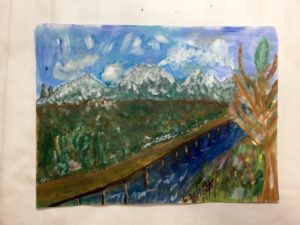
(1) In AAN’s earlier report, we used the name Harun Gul: the US either uses this or ‘Harun al-Afghani’ or ‘Harun, the Afghan’ in Arabic. The Arabic takhalus, ‘al-Afghani’, implies he belongs to al-Qaeda because an Afghan would not refer to themselves as Afghan unless to foreigners or use a word that refers to the currency in Dari and Pashto. Assad is what he himself and his family and friends call him.
(2) Quotes from Sullivan-Bennis are either from an interview with AAN or an interview she gave to the curator of the exhibition, excerpts of which appear in the exhibition catalogue.
(3) Amrullah Saleh, who was then director of the NDS told AAN the agency had not handed Assad over to the Americans. The US record says the agency did.
(4) The exhibition “Ode to the Sea: Art from Guantánamo” is on until 26 January 2018 at the President’s Gallery, John Jay College of Criminal Justice, New York, Monday-Friday 1-4pm or by appointment: contact curator@artfromguantanamo[dot]com. Featured are the artworks of eight detainees, five from Yemen, and one each from Algeria, Pakistan and Kuwait. More details can be found here.
(5) The author had a similar experience after the 9/11 attacks, trying to explain the ‘Twin Towers’ to people who had only seen, at most eight-storey buildings (television was then banned in Afghanistan).
(6) This is what we wrote about the letters in “Kafka in Cuba” (full sourcing in original).
Having seen the way habeas petitions have been dealt with by judges, [Rahim’s lawyer] Warner came to the conclusion that they were pointless: they currently provide, he has said, no “meaningful judicial review.” In a context where the Bush administration’s description of those at Guantánamo as ‘the worst of the worst’ has stuck, Warner decided to “adapt his strategy” and publish some of Rahim’s letters. It was an attempt to humanise his client for the American public.
Rahim’s letters
Bearing in mind that the sentiments expressed in these letters have also not been subject to the rigour of a courtroom, they appear to show a man with a quirky sense of humour who sounds human, despite his torture and long, indefinite incarceration in the maximum security facility at Guantánamo (Camp 7). He jokes about the local wildlife and discusses pop culture and American TV stations, for example, expressing his support for the transgender reality TV star, Caitlyn Jenner: “I am happy for her because people are born how they are.” He calls John McCain a “war hero,” Donald Trump an idiot and a “war zero” and thinks Hilary (Clinton) “has a chance.” Rahim talks about having registered with the online dating site, Match.com, and comments on the online infidelity promotion site, Ashley Maddison, being hacked into. In the letters, he also reflects on his time in detention:
In 9 months the CIA treated me like an animal – only animals were treated better, they did not let me shower or use the toilet for months, they fed me animal food. They would not let me pray unless I confessed to untruths – and I was praying for my life. Doctors and psychiatrists got rich off my blood. Are they still harming people? I have dignity. Those who humiliated and hurt me do not. I pray for them now.
Rahim says he wants his day in court:
I am innocent. I was hung from the ceiling until I was dead… How can we undo this injustice? Give me a trial. Let me be free. I am not your enemy and never have been.
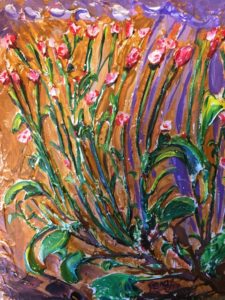
Appendix
In November 2016, AAN published a major investigation into the experiences of Afghans in Guantanamo. This is what we published about Assad. It uses the name the American military has used for him, Harun Gul. ISN refers to his Internment Serial Number. Assad has now been detained for ten years. Full sourcing can be found in the original paper, “Kafka in Cuba”.
Harun Gul (ISN 3148), Nine Years in Detention
- Place of Birth: Sherzad, Nangarhar Province
- Date of Birth: 1981
- Detained: US says NDS detained Harun, 4 February 2007 and handed him over (denied by then director of NDS); transferred to Guantánamo, 22 June 2007
- 2010 Task Force decided to refer him for prosecution (no legal movement on case since). Periodic Review Board ordered his indefinite detention, 14 July 2016
- Guantánamo Documents: Guantanamo Joint Task Force Assessment only
Summary
Harun was detained in Nangarhar in 2007 and accused of being a senior commander with Hezb-e Islami, of associating with “high level militants,” and as having “admitted to acting as a courier for al Qaeda Senior Leadership.” Among the eight cases studied in this report, information about Harun is the scarcest, but from his WikiLeaked Assessment, it can be seen that all the allegations against him are sourced to his own testimony or that of other detainees. In his habeas petition, Harun has alleged he was tortured in Afghanistan and Guantánamo. The methods he described are consistent with those used by US forces at this time. The information available suggests that, even if the allegations against Harun are true, he would have been only a very junior commander and, at his level, Afghan couriers working with al Qaeda are many. The rationale for holding him in Guantánamo is not apparent. The Periodic Review Board decided in August 2016 to keep him in detention.
Capture
Harun’s Assessment says he was detained by the Afghan intelligence agency, NDS, in the Hadda Farms area, Chaparhar District, Nangarhar Province, on 4 February 2007, along with six other men also allegedly suspected of being Hezb-e Islami, none of whom (judging by the absence of ISN numbers) were held at either Bagram or Guantánamo. The then director of the NDS, Amrullah Saleh, told AAN that his agency did not hand over Harun or any other Afghan national to the US authorities. Harun was transferred to Guantánamo on 22 June 2007.
Torture
Harun has alleged that he was tortured in Afghanistan and Cuba:
During his captivity in a military facility in Afghanistan, Mr. Gul’s captors blindfolded, shackled, and hung him by the arms while they were still cuffed behind his back, stripped and tortured him. He was kept alone and naked in a cell without even a bucket as a toilet… During interrogations [in Guantánamo] prison authorities shackled Mr. Gul for up to twelve hours without water or food in a position that allowed him to neither fully stand nor sit, preventing any sleep. That sleep deprivation torture still plagues his nights nine years later.
The allegations are consistent with methods known to have been practiced.
Allegations and evidence
Harun’s capture was announced in a US Department of Defence press release as the detention of a “senior commander of Hezb-e-Islami/Gulbuddin”:
Harun al-Afghani, who was captured as a result of our ongoing efforts in the Global War on Terror, is known to be associated with high-level militants in Afghanistan, and has admitted to serving as a courier for al-Qaeda Senior Leadership (AQSL). [He] commanded multiple HIG terrorist cells that conducted improvised explosive device (IED) attacks in Nangarhar Province. He is assessed to have had regular contact with senior AQ and HIG leadership.
Documents supplied to his Periodic Review Board hearing, held on 16 June 2016, give a little more detail to the allegations: he had worked, the US military said, as a courier for Abd al-Hadi al-Iraqi (ISN 10026) until 2004 or 2005 and “provided logistics support to fighters aligned with al-Qa’ida and HIG, and probably collaborated on operational matters with leaders of other anti-Coalition groups.” Harun’s Assessment has strings of allegations sourced almost entirely to Harun himself or other detainees. However, until we have heard his side of the story, it is impossible to judge how plausible they might be.
One indication that the US may have played up its captive comes in the only other publicly available document about Harun, a 90-page ‘terrorist interrogation report’ (TIR) which was presented as part of the government’s rebuttal of a habeas petition by another Afghan detainee, Muhammed Rahim (case 8). After 2001, it said, Rahim was in charge of six armed groups in Nangarhar province, each with just three to five men, and a total operational budget for each one for three months of just 20,000 to 40,000 Pakistani rupees (roughly 200-400 US dollars). This is the description not of a senior commander, but someone at the lowest level of command in Afghanistan. The TIR also says Harun was a senior student leader before the 9/11 attacks, who, just before his detention, had been allegedly tasked with overseeing the creation of a militant Hezb-e Islami student organisation. It also alleged he had a couriering role, passing on letters from the provincial Hezbi commander to Arab members of al Qaeda – actually low-level work.
One is left wondering why Harun was taken to Cuba and why he is still there. Detaining such junior players can be of practical importance for disrupting operations or getting intelligence. However, the US authorities have not only still to back up their case that the allegations against Harun are true, but also, if they are true, that he is so dangerous he needs to be held in indefinite military detention without trial.
US plans for Harun
The 2010 Task Force recommended that Harun be considered for trial. The charges were not specified and there has been no known movement on this. Harun had a Periodic Review Board hearing on 16 June 2016. The board decided to keep him in custody, citing his “lack of credibility and truthfulness, as well as his evasiveness and vague answers.” However, it also encouraged him to “continue to work with his family and representatives on his future plans and to be forthcoming with the Board in future reviews,” a hint possibly that at a future hearing, the Board might decide to transfer him.
By Special Arrangement with AAN. Original link.
Disclaimer: Views expressed on this blog are not necessarily endorsed or supported by the Center for Research and Security Studies, Islamabad.



